Marketing made Easy — A Comprehensive Guide to Marketing

Are you looking for a comprehensive guide to understand the essence of marketing?
This article talks about the essential marketing fundamentals and various other aspects of marketing which are certainly overlooked by businesses many times and that hinder their growth in the future.
This article is a good read for you either because you probably already want to read it in the first place, haha, or you are into a business, a marketer, a blogger, or even a complete beginner in the marketing world.
You can probably be reading it in 2025 or even later. And thinking, is it still relevant?
Definitely yes, its relevance can never be overpassed.
Because the fundamentals of marketing are rooted in human psychology and the market out there. And even though the mediums, techniques, or strategies to market products and services may change, the fundamentals will always remain the same.
Table of Contents:
So let us dive right into the fundamentals of marketing.
The Fundamental Laws Of Marketing
Marketing is the set of activities, and processes (involving the use of various tools, practices, approaches, and mechanisms) for creating, communicating, delivering, and exchanging offerings that value customers, clients, partners, and society.
‘Fundamental Laws’ simply means the primary set of rules and principles on which something is based.
The Fundamental laws of marketing are the core principles on which marketing and consumer behavior are based and these principles primarily revolve around four things: product, price, promotion, and place.
Let us discuss these principles one by one.
- Marketing is based on science. Not on creativity.
Because marketing starts even before creating the product. It begins with understanding the customers and customers’ needs which leads to creating the product that fits.
That’s why it’s based on science and not just coming up with any random product idea or writing creative slogans, or an ad or landing page copy to sell a product that may already exist.
Now you may wonder, what is the science behind it and how things actually work in marketing?
The answer lies in our next principle.
- Sending the right message, to the right person and at the right time.
It’s very important to understand your target audience. Also making them aware of how your products or services are going to help them at the time when they are actually looking for it.
To understand it better, we will be briefly discussing further the topics of Niche selection, Marketing Funnel, and Integrated Digital Marketing Framework to hit the right spot and get effortless conversions.
But before moving on to that let’s know how important is the trust of your prospects.
That’s what the next principle talks about.
- Building and maintaining mass trust.
Marketing is not just about selling. It is also about keeping your existing customer happy by communicating with them and encouraging them to be a customer for life.
Example: Even after shopping for a product from Amazon, you still keep receiving emails regarding your feedback on their products, your complaints, and the best offers going on on their products.
Because first, they want to win the trust of their customers by satisfying them and then encouraging them to buy from them again.
In marketing, trust is an important and a scarce resource.
The universal law of cause and effect states that for every cause, there is a definite effect. So, what is the ultimate effect of the whole marketing game?
- Marketing is a means to an end.
The ultimate purpose of marketing is to build a strong brand name that has captured the ‘only’ position in the minds of people.
And this might be already true for you in many products.
Like if you go to a shop to purchase a bottle of water, you most probably would ask for a Bisleri rather than a mineral water bottle. Or if you crave to eat noodles someday you don’t ask for any sort of noodles, you just want Maggie.
And as the brand name becomes popular in the market, the need for marketing also goes lesser and lesser.
“The aim of marketing is to know and understand the customer so well the product or service fits him and sells itself… The aim of marketing is to make selling superfluous.” — Peter Drucker.
But, have you thought, about how it even started? What created that desire for you to choose Maggi over other brands?
- Marketing is a game of perceptions.
It is a manipulation of perception in the mind of the consumer. There are no ‘best’ products or services. It’s all in the mind.
Marketing doesn’t really define the actual quality of a product or service but how people will perceive your product or service through its marketing and branding.
- Marketing is not a battle of products, it’s a battle of perception.
Example: In the United States when you think of Honda, you may think of a high-quality reliable car manufacturer. However, in India, Honda is best known for its motorcycles and with car sales, it’s nowhere close to other brands.
So, It’s just about the perception that brands are able to create in your mind.
But do you think that only projecting a good image of your product is enough?
Of course not and there is something that is real and really matters.
- Only the product is rooted in reality.
Marketing is required to discover your products and services to the customers and develop a good perception of them in their minds.
But the actual product is the reality.
Because a quality product always sells itself.
So never let marketing become more important than the product.
And a great product or service converts your customers into your brand ambassadors. It works as the best channel of marketing.
But what if your best quality products are not the best among the rest? Because…
- People will always remember the no. 1
It’s better to be the first one than just to be better.
Nobody knows you if you are not in the 1st place in a particular category.
For example- you would know the name of the 1st Indian to go to space but you most probably won’t know the 2nd one who is equally important.
So rather than being a number 2 or 3 in a category, try to become no. 1 in a category that you identify for yourself.
Examples: Google, Zoom, and Xerox are the names that are no. 1 in their respective categories.
But imagine you have just started running and you are in a race and trying to compete with the champions. What could be your probability of winning it?
- Setting up a category you can be first in.
If you can’t become a leader in a category, become one in a sub-category.
If the industry you are in is already saturated and has a lot of competition. So rather than trying to be the leader in such a category, try finding a category where you can become the only player.
The idea is to always try to be the only one.
Although it gives you a first-mover advantage to lead and grow exponentially, there is certainly a harsh reality to it.
- In the long run, every market becomes a two-horse race.
In the beginning, you carve your way into a new category where you can be the only one but eventually, every market becomes a two-player market.
With top companies competing for market share. And this is true for every market.
Examples: Coca-cola and Pepsi, Microsoft and Apple, Android, and Ios.
So you have to keep up with the market trends and keep updating your skillset and products.
Now as we have understood the fundamentals. To implement them you need to choose the right medium to market your business.
Understanding Traditional And Digital Marketing
Traditional marketing refers to a form of promotion that reaches an audience offline. Companies use traditional marketing channels to engage their audience and broaden their reach such as –
Print media (newspaper and magazine ads, billboard ads, newsletters, brochures, leaflets, etc.),
Broadcast media (TV and radio Ads),
Direct mail (flyers, postcards, catalogs),
Telemarketing.
Whereas Digital marketing refers to using electronic devices or online platforms to promote a product or service. Some common forms of digital marketing include –
Email,
Search Engine Optimization,
Social media,
blogging, etc.
Traditional Marketing Or Digital Marketing?
Which one is the right medium for you?
It completely depends upon the preferences of your business.
However, there are some benefits of online marketing over offline channels.
You can plan and execute a digital marketing strategy with minimal cost as compared to traditional means.
Online, it is easy to track, monitor, and analyze the results whereas it’s difficult to analyze the success of traditional marketing tactics.
Also in traditional marketing, there is little chance of contact between you and your customers. In the online world, you can directly engage with your audience and take their feedback.
Although traditional marketing has been eclipsed by digital marketing in many industries, it is still effective in boosting your brand.
If your product is generic and has a wider target audience, TV ads can reach millions at a low cost. For example, Samsung’s generic products have a wider audience and that’s why they run Tv ads even after holding a major share of the market.
India has TVs in 197 million homes out of 298 million homes (source Wikipedia), Radio reaches 65% population, and newspapers reach 165 million people.
So, traditional marketing presents opportunities to reach a large audience in ways that digital marketing cannot.
Marketing Funnel
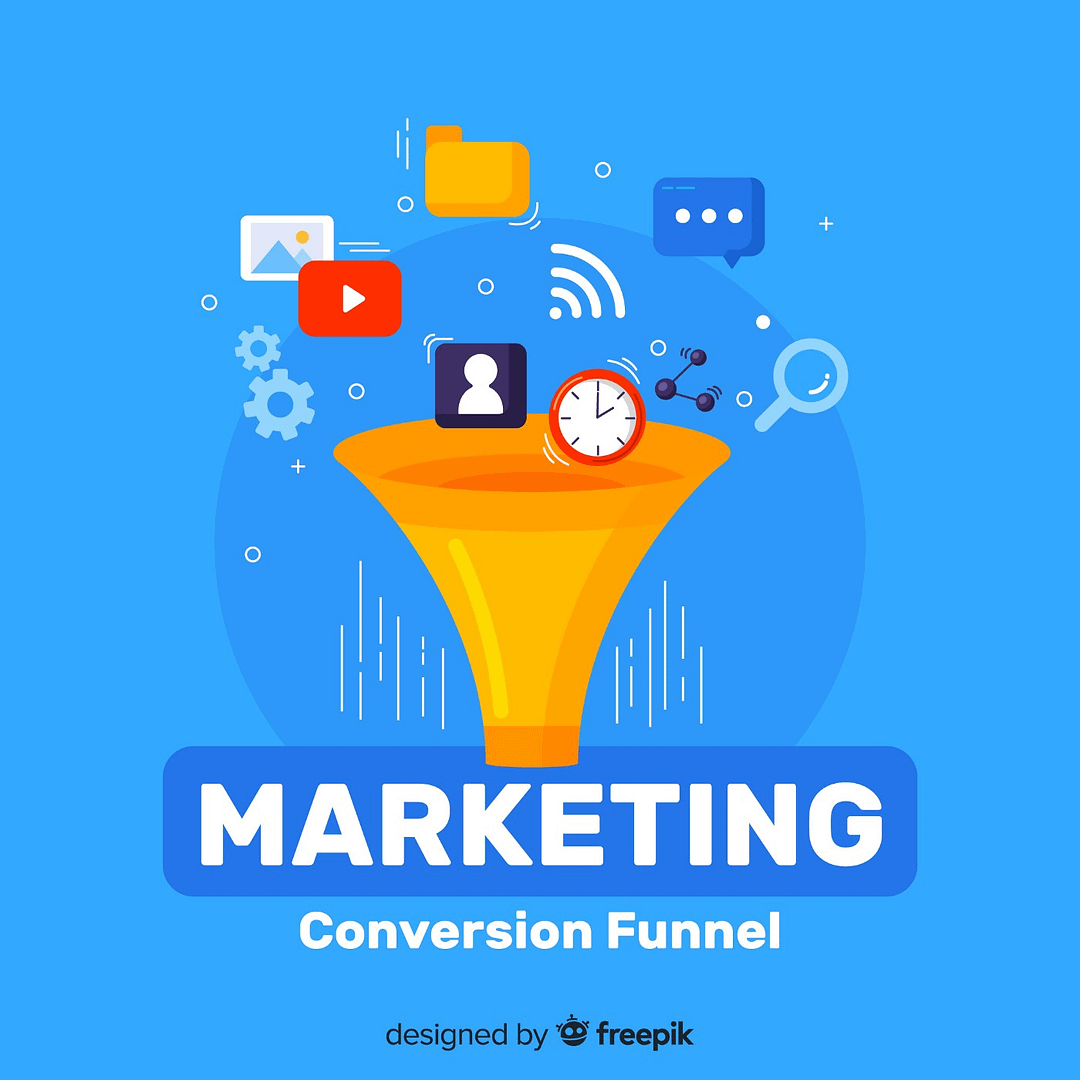
What is a Marketing Funnel?
A marketing funnel is a framework breaking down the customer journey from the “awareness” stage (when they first learn about your business) to the “purchase” stage (when they are ready to purchase your product or service).
It’s called a “funnel” because of its shape: wide at the top as prospects enter, then increasingly narrow as they are disqualified or decide not to buy.
Many types of funnels you might hear about include:
- Sales funnels
- Webinar funnels
- Email funnels
- Video marketing funnels
- Lead magnet funnels
- Home page funnels
In this discussion, we’re focusing on one of the marketing funnels, which is called CATT.
‘CATT’ stands for Content Attention Trust Transaction.
This framework is based on a mass trust system.
Unlike the old system of door-to-door sales i.e AIDA (Attention Interest Desire Action) framework in which you have to go and talk to people individually one on one and convert them into sales. And therefore the trust is not scalable there.
And people are not going to buy your product unless they trust you.
So it’s not relevant to today’s consumer buying process.
Whereas, the CATT system builds the trust of your customers at a scale, which also makes it an ideal framework for the digital medium of marketing.
And in this system, communication for marketing is from an individual who is a personal brand. Because people want to hear from people and not from the brands.
So how can you harness the power of this incredible framework?
The CATT system states,
Wealth = n^CATT, where
[n] Niche = Choosing a niche where you can be successful.
[C] Content = Creating useful content that attracts people from your niche. It can be blog posts, videos, lead magnets, or live webinars.
[A] Attention = Driving attention(traffic) to your content using SEO, Social media, Paid Advertising, and referrals.
[T] Trust = Building trust with your audience with tripwires, marketing automation, and retargeting.
[T] Transaction = Converting your leads into customers with natural sales methods.
It’s like a power law. You choose a niche and multiply the effectiveness using CATT.
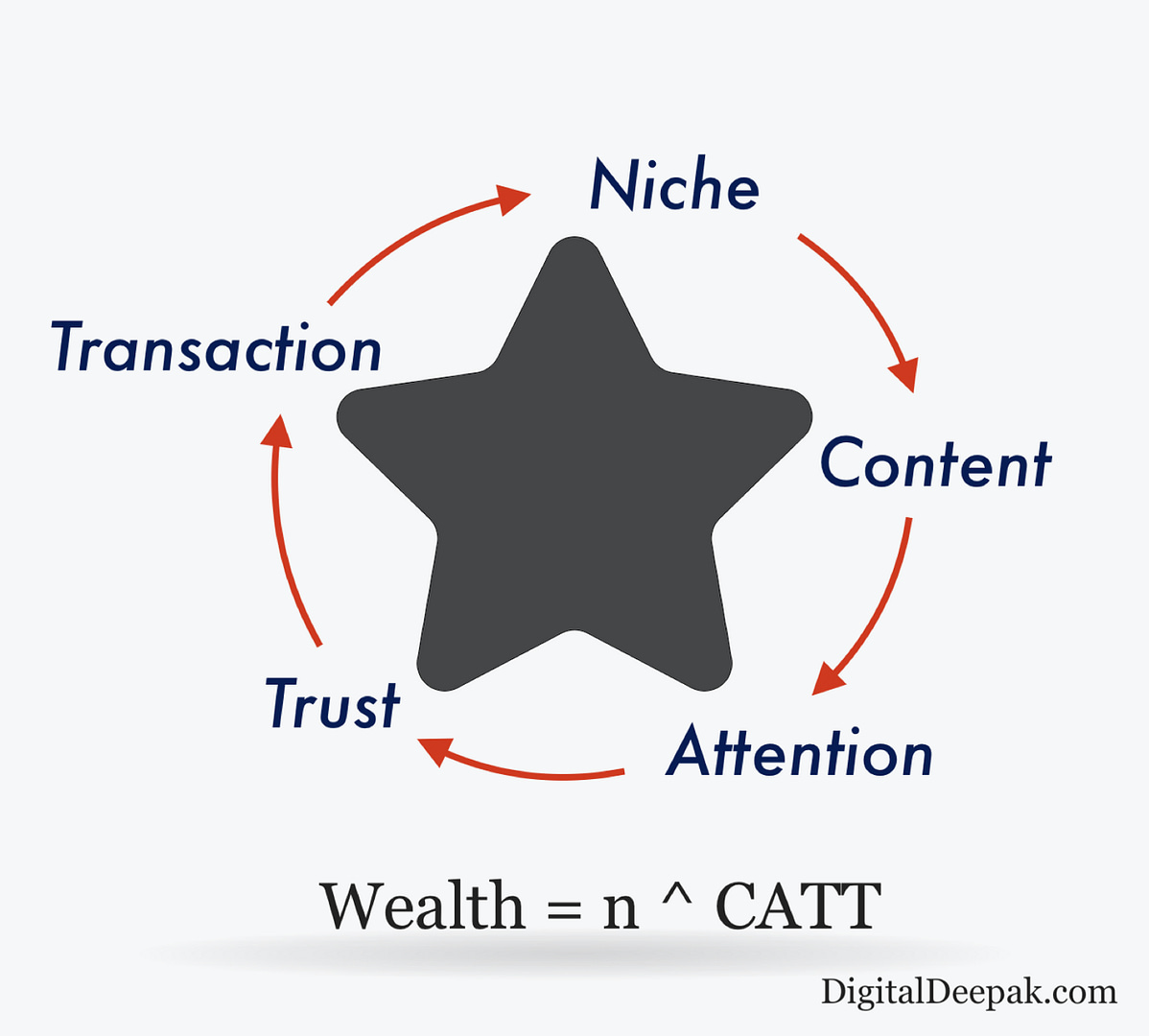
What is a Niche? And How To Choose The Right Niche?
Niche is a specialized segment of the market for a particular kind of product or service. For example: within the market for women’s shoes are many different segments or niches. Shoes for a vegan woman would be a niche market, as would shoe for nurses.
Nearly every market can be further refined or divided by specific needs and preferences of the customers.
To define the right niche for yourself, I have a formula for you.
It’s n = T ∩ M ∩ P, where T stands for Talent, P for Passion, and M for Market. The market segment where all these three things intersect and get under one roof, that’s the right niche for you.
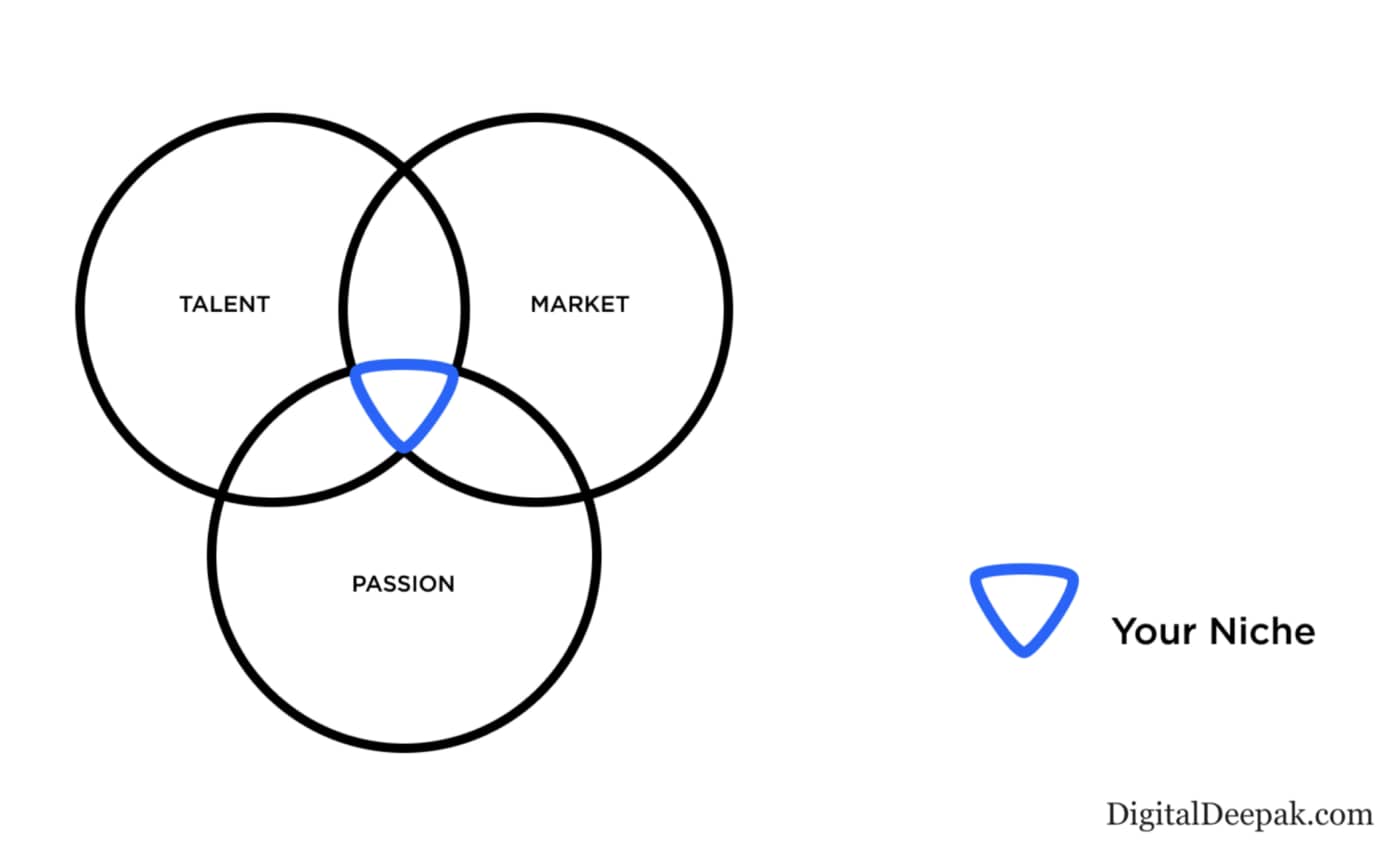
If you have a talent in a particular category in the market and you can create a product/service out of it,
And you have the passion to back it up and do it every single day.
Also, that product/service has a market full of prospects.
That’s the way to go.
Integrated Digital Marketing Framework
A marketing framework is a template containing instructions for the execution of your marketing funnel. The framework ensures that you’re delivering the right content to the right audience, through the right channels, at the right time to achieve your core marketing objectives.
So to execute the CATT funnel, there are different models but today in this article we’ll discuss a well-proof marketing framework which is called an Integrated digital marketing framework.
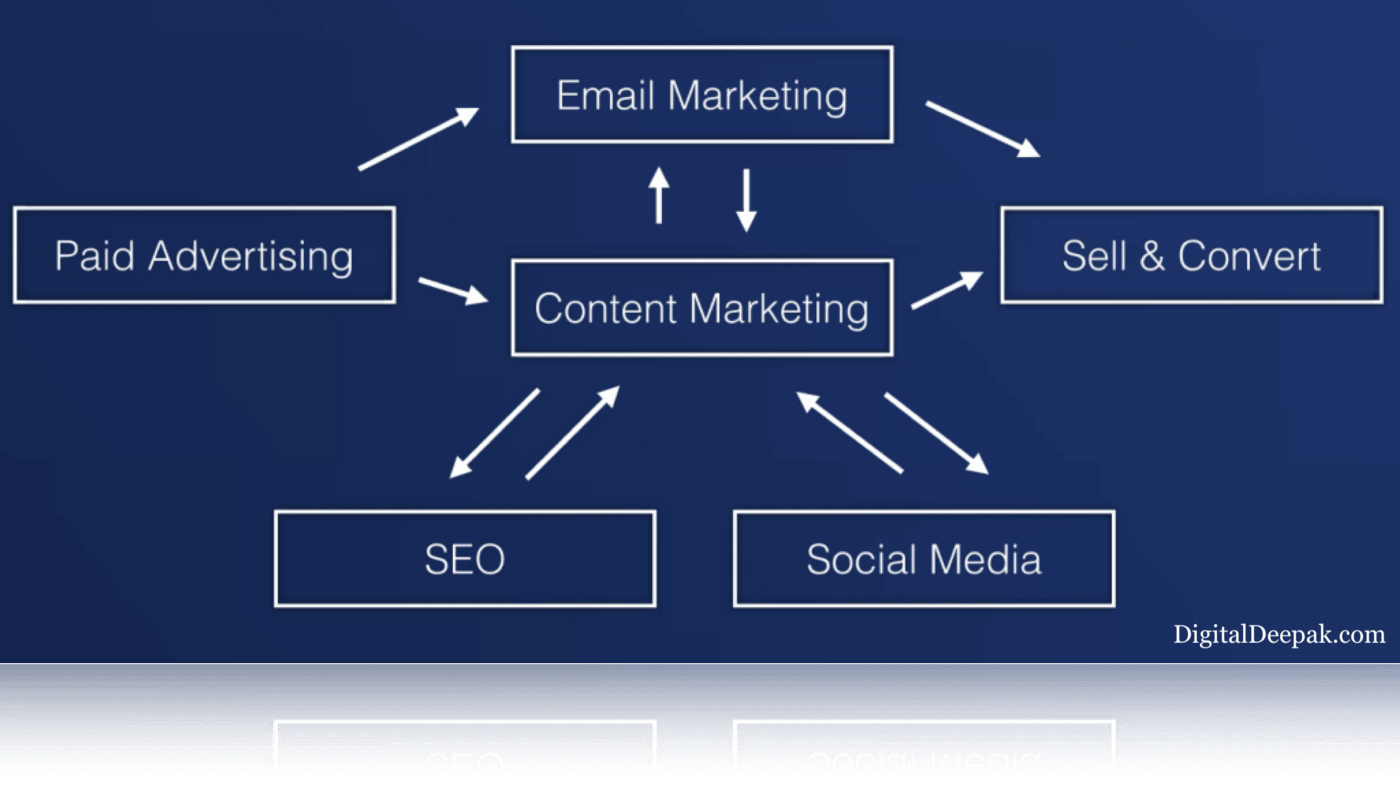
As life is a balance of different aspects integrated together, similarly different marketing activities performed have to complement each other for a common cause which is Sale or conversion.
Where Content is the king. The framework emphasizes creating high-quality content for your business like blog posts, youtube videos, and live webinars that can drive the attention of your prospects. By using various components of marketing such as Email Marketing, Search Engine Optimization, Social Media Marketing, and Paid advertisement.
Now as you have free content ready, you market it through running paid advertisements on search engines and social media. It will catch the attention of your niche customers.
The audience consumes your content and eventually subscribes to your email list. And now you can keep sharing the new content to your email list and they’ll be again coming back to your content. With this, people end up building trust with you.
And then the sales will happen naturally.
Importance And Evolution Of A Personal Brand
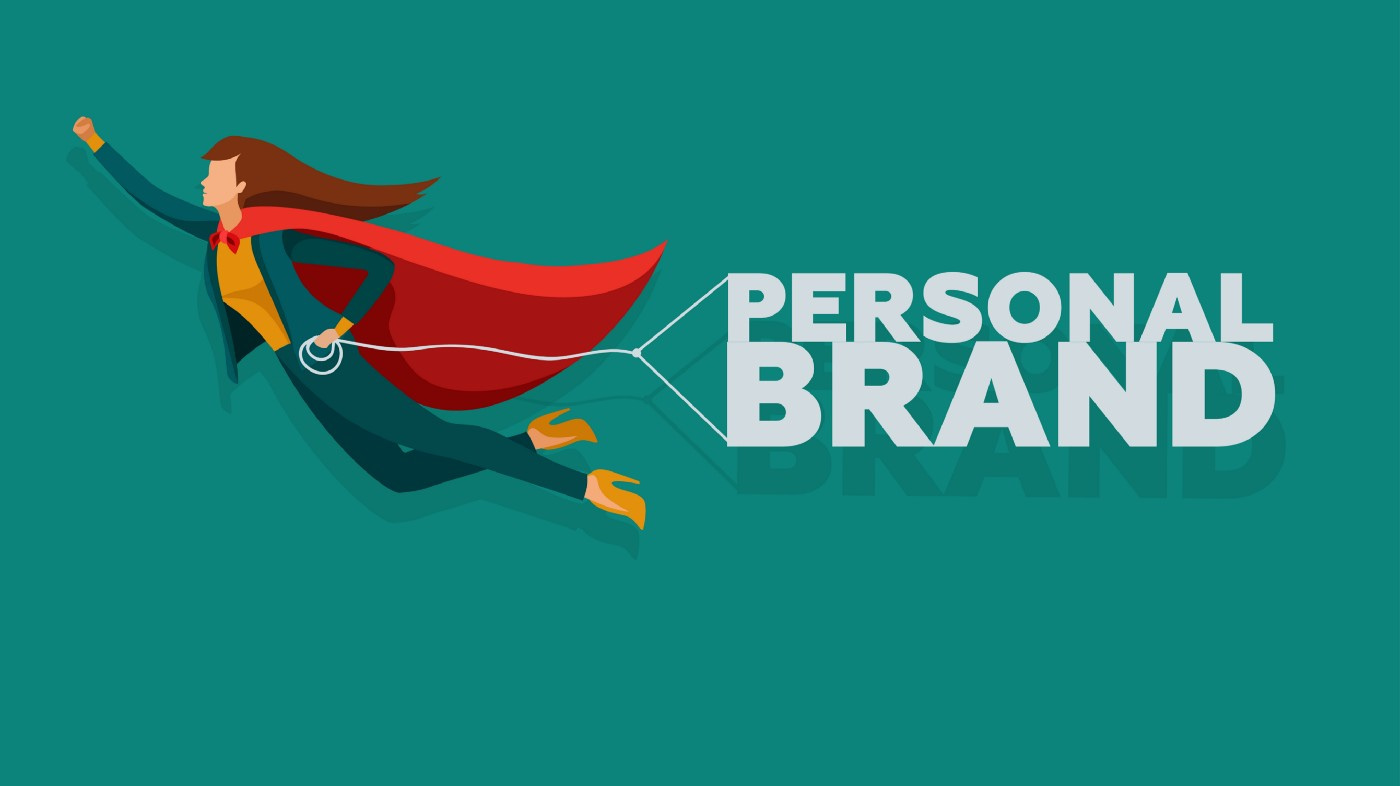
Personal branding is the conscious and intentional effort to create and influence public perception of an individual by positioning them as an authority in their industry, elevating their credibility, and differentiating themselves from the competition, to ultimately advance their career, increase their circle of influence, and have a larger impact. [source: Wikipedia]
Importance of Personal Branding

The best-known will always beat the best.
And Effective personal branding will differentiate you from the competition and allows you to build trust with prospective clients and employers. Because as mentioned earlier, people want to hear from people and not from brands.
That is why the personal brands have a bigger following than the Brands they may own.
For example, Elon Musk has a bigger following than SpaceX and Tesla.
Moreover, a personal brand becomes an influencer and a brand ambassador for the companies he owns.
So, let me take you through the journey of becoming a personal brand.
Evolution of a Personal Brand
This is a walk-through of the stages of the evolution of a personal brand.
Learn: First, you learn a particular skill through understanding the concept, remembering the facts, and practicing the procedures.
Work: Putting your newfound skills to work by doing a job or freelancing projects. Go from practice to implementation for better understanding.
Blog: Write about what you learned and experienced through work. This will provide you with a better understanding of your own capabilities and makes your thought process clearer.
Moreover, you get ahead in the journey of building your personal brand.
Consult: Now you may start offering consulting services to businesses instead of working for them.
Mentor: Mentoring others who wish to live the same journey as you. Mentoring will help you scale your understanding to a whole new level.
Startup: Finally, start your own line of products or services with the understanding that you have developed about the market and your own work.
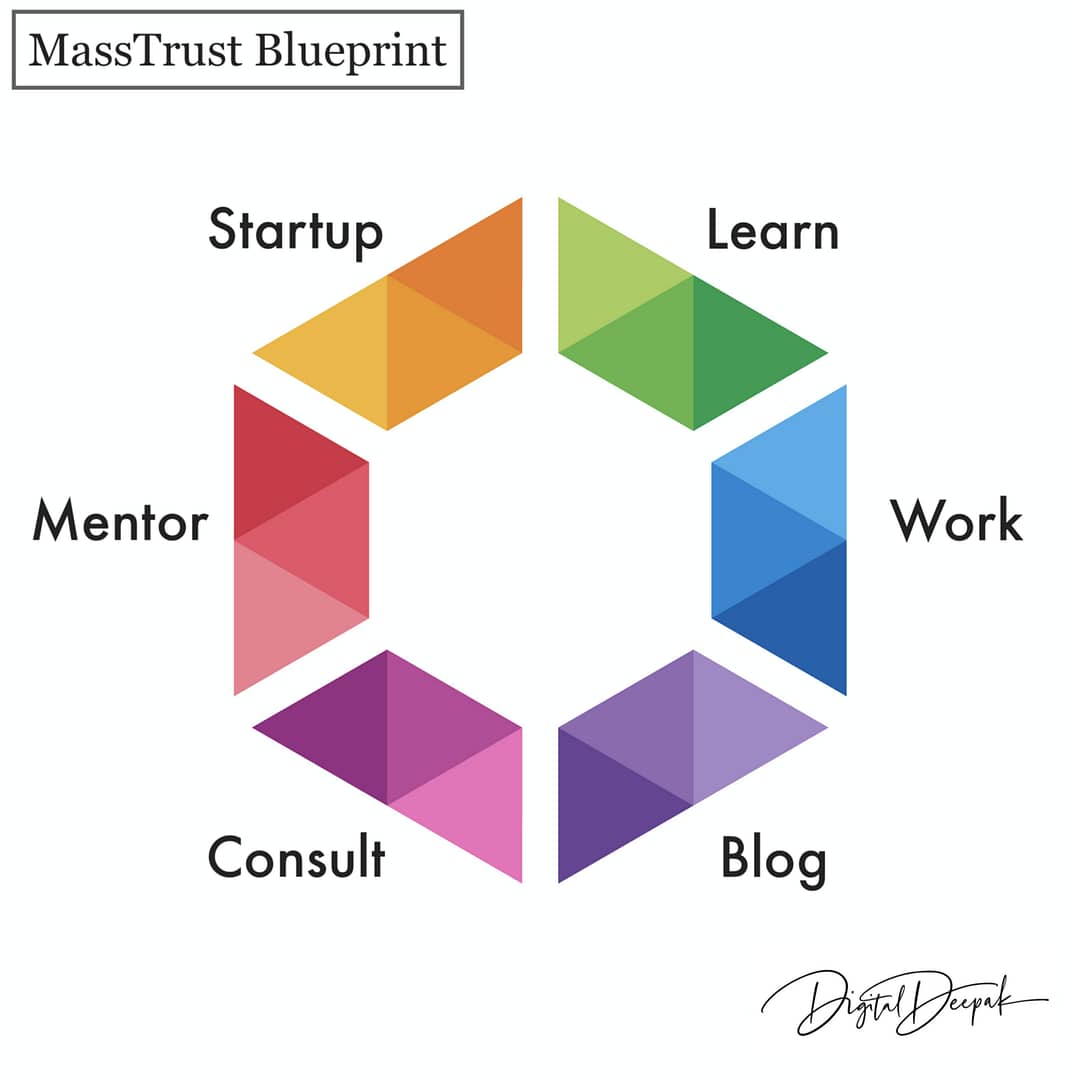
Conclusion
We discussed in the article the importance of the fundamentals of marketing. Governing the functioning and performance of your business. The basis for choosing the right medium of marketing for your business. Broke down the customer’s journey through various stages of the CATT Marketing funnel using the Integrated digital marketing framework. And last but not the least, the significance of Personal Branding is to become a brand ambassador of your business.
Subscribe to get notified of the latest Issues & access to the library of members-only issues.
Related Posts
